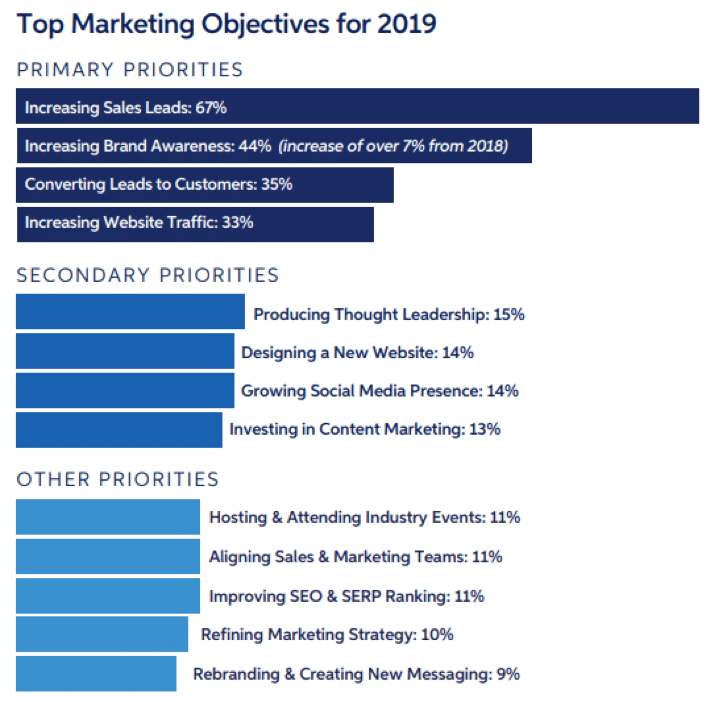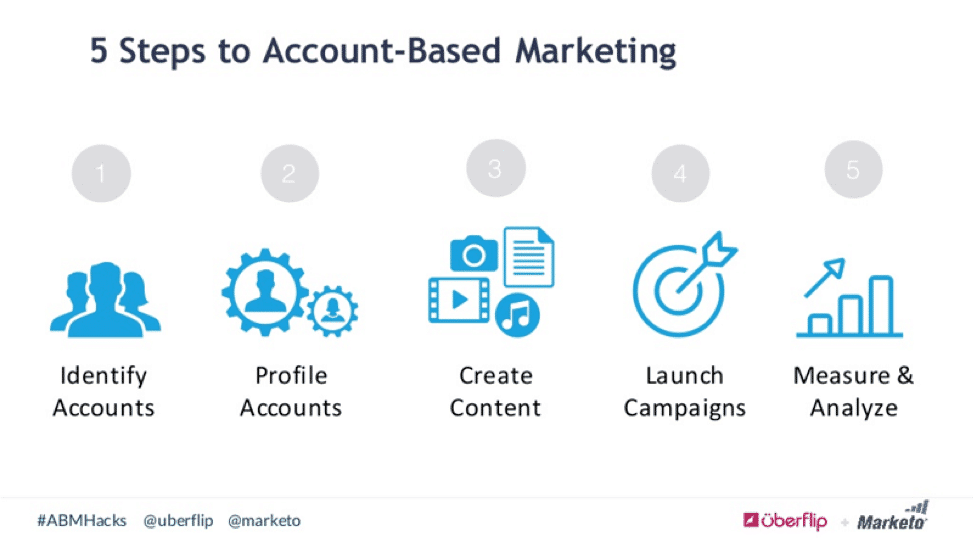
Why Sales-Marketing Alignment Is Necessary for ABM to Be Effective
Account-based marketing (ABM) offers a lot of benefits to most B2B organizations. An expert round-up on Forbes Agency Council revealed that the majority of B2B business leaders saw incredible results from an ABM program, including improved lead generation, opportunities for personalization, lowered costs, and better relationships with clients.
All of these things can clearly lead to a more profitable company and a better customer experience, which is why many companies are allocating large sums of their marketing budget towards this strategy.
The fundamental idea behind ABM is to treat each customer as an individual by targeting him or her with content and experiences that are relevant to their preferences and priorities. Clearly, ABM has an effect on sales – but is true alignment between both the sales and marketing departments in terms of goals, strategies, and key areas of focus entirely necessary in order for this type of marketing to be a success?
Quick Takeaways:
- When content personalization is done correctly, it can a powerful impact on a customer’s likelihood of conversion and even cultivate a long-term relationship.
- ABM gives the sales team fewer leads to work with. However, these are far more likely to convert.
- Content needs to be based on experiences of salespeople and speak to leads throughout their individual journey, in order to nudge them towards conversion.
Why Sales Marketing Alignment Matters
In order for a team to see the real benefits of ABM, it absolutely needs to be in line with both the sales and marketing team. This is because ABM turns the traditional approach to sales on its head. Traditional marketing follows the idea that if the top of your sales funnel is full, then it will have a trickle-down effect that leads to a higher number of conversions.
ABM is not focused on building the number of leads; in fact, when working with an ABM approach, your sales team will probably have fewer leads than before. But the secret here is that these leads will be incredibly relevant and much more likely to convert.
This is the key reason why your sales and marketing teams must be completely united in their approach. Otherwise, sales teams could follow an outdated approach with half-hearted nurturing tactics that fail to convert these leads, slowing down the sales cycle and cutting into profits.
Before your team dives head-first into an ABM model, your leaders need to take the time to explain this new approach and ensure that both teams are on the same page. If the sales team does not understand that each lead shows incredible potential, then the hard work of the marketing department is useless. If the marketing team does not understand how to narrow down their targeting approaches, then they will not be able to generate the most relevant leads.
ABM helps make sales and marketing strategies possible, particularly with things like personalization, lead nurturing, and retargeting. Therefore, the departments need to be aligned in order to see the best results. Unfortunately, most businesses don’t see this as a priority. According to a report from Sagefrog Marketing Group, a mere 11% of organizations listed sales and marketing alignment as one of their top marketing objectives.
How to Get Sales and Marketing Aligned
As with most things in sales and marketing, reaching true alignment is by no means an easy task.
The foundation for alignment is motivation and understanding. If either team doesn’t understand how ABM and alignment are connected, they will most likely lose it as their key focus.
Typically, it is harder for sales teams to really get on board with ABM because it goes against their fundamental belief in generating a high number of leads. So, the C-suite needs to take the time to explain the connection as well as the benefits that ABM provides to the sales team, the most significant ones being:
- Higher conversion rates
- Faster sales cycles
- More qualified leads that are easier to nurture
The second step to alignment is collaboration. Both teams must work together – this is not just the marketing team’s chance to call the shots. ABM follows several basic steps and each team plays a significant role in every progression:
1. Discovering the best accounts to target
Sales and marketing teams should sit down together to discuss the lists that they use to qualify leads and look for overlapping qualities. Both teams should also make sure that their lead qualification and scoring systems are similar and back up their choices with data that proves which types of accounts are most likely to convert.
2. Building buyer personas
In addition to finding the overlapping qualities for qualified leads, sales and marketing teams should also go over the more minute details of their customers and create categorized lists that can be applied to buyer personas. This includes information like a person’s position in their company, business priorities, interests, industry focus, and so on.
Sales teams should also try and pull insights (in-depth details about individuals) from their CRM activities – personal preferences such as they enjoy golfing on the weekends, or that it’s best to reach them through LinkedIn on weekends, and so on.
3. Creating strategic content
Although content creation typically falls to the marketing team, it is important to receive some input from the sales team in regards to common customer pain points, FAQs, and motivations. Sales teams should share their experiences with clients and identify the types of content that seems to have the greatest influence on customers (in terms of answering their questions or delivering ROI).
4. Incorporating ABM into all marketing strategies
ABM is not a stand-alone strategy – it must be integrated into every marketing channel to have the greatest effect. Sales and marketing teams should work together to see where and when their efforts and content will work best with lead generation and nurturing.
For example, marketing teams can plan out the method or channel (e.g. search advertising) to target a specific account. Once this lead is generated, it is up to the sales department to determine how they will deliver content (e.g. follow-up emails) to nurture that lead.
5. Measuring, monitoring and adjusting
As with all marketing and sales strategies, it is critical to monitor the results and change when needed. It may be easier for marketing teams to analyze and provide the data in this regard, but all metrics should be discussed by both teams in order to pinpoint the weakest points and discuss solutions.
Sales-Marketing Alignment is the Cornerstone of ABM Success
The fact is that sales and marketing alignment is not a one-time task. Your teams will need to constantly work together and make sure that everyone is truly working together to target accounts and nurture conversions:
Make sure that the proper protocols are put into place to cultivate this kind of partnership between the two teams so that everyone is focused on the same goals of reaching ABM’s fullest potential. Specifically,
- Develop high-quality, sales-enabled content that targets high-value leads at every point of the customer journey.
- Constantly educate sales and marketing teams, and provide them with apt resources and tools.
- Use a lead scoring system that suits your sales cycle.
- Follow up with leads in a timely manner with relevant content.
- Route back insights from sales interactions into your content creation and distribution processes.
- Make sure sales and marketing teams are radically transparent with each other in their activities and outcomes.
Which sales and marketing roles play critical roles in ABM for you? What models does your company leverage to ensure alignment? Share your thoughts and experiences in the comments.
I’ll leave you with this video:
If you are ready to get more traffic to your site with quality content that’s published consistently, check out our Content Builder Service. Set up a quick consultation, and I’ll send you a free PDF version of my books. Get started today–and generate more traffic and leads for your business.








